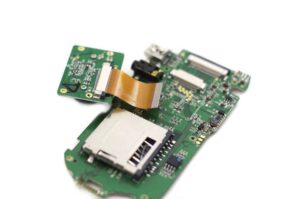Manufacturing Process for Rigid-flex PCBs
2022-10-25With flexibility and the ability to assemble in 3D, the demand for rigid-flexible PCBs is on the rise. We can say that the importance of rigid-flexible PCBs in PCB manufacturing can not be overemphasized
What is Rigid-flex PCBs?
Rigid-flex PCBs connect rigid PCB materials to flexible materials.
The result is bending only in certain places, making the board more rigid but still flexible.
If you want signals to be transmitted between the rigid and flexible sections, you will need to design a rigid-flex PCB.
In a rigid-flex design, the flexible part of the board resembles a typical flex circuit. At the same time, the material of the rigid part is similar to that of a standard rigid PCB. Like standard PCBs, these rigid areas are usually made of glass fiber as the base material.
Multilayer rigid-flex PCBs also include prepreg glass fibers as an intermediate substrate layer.
However, not all PCB manufacturers can meet the complex flexible printed circuit board manufacturing process. The following are some of the characteristics of rigid-flexible PCBs.
Features of rigid-flex PCBs
- Flexibility
- Lightweight
- Cost effective
- Save design and assembly process time
- Low noise and high reliability
- Resistant to high and low temperatures and fire
- Prevent electrostatic interference
Rigid-flex PCB manufacturing procedures
- Material cutting
- Dry film coating
- Automatic optical inspection
- Browning
- Lamination
- X-Ray Inspection
- Drilling
- Electroplating
- Graphic Conversion
- Etching
- Screen Printing
- Exposure and Development
- Surface Finishing
- Depth Control Milling
- Electrical Testing
- Quality Control
- Packing
Rigid-flex PCB design rules considerations
Rigid-flexible boards are much more complex in design than standard PCB design. In particular, we should pay attention to the special places, including the transition area of rigid-flexible, alignment design, over-hole design, etc. All of these items need to follow the requirements of the corresponding design rules.
Over the hole location.
In the dynamic use of the case, especially when the soft board is often bent. It is necessary to avoid as far as possible the soft board over-hole, which is prone to breakage and damage.
The design of the solder pads and vias.
Solder pads and vias in line with the electrical requirements, win the maximum, the connection between the pad and the conductor using a smooth transition line, avoid right angles. Independent pads should be added disk toe to strengthen the support role.
Alignment design.
In the flex zone (Flex) alignment design requirements are best to go rounded lines, rather than angled lines. The opposite of the hard board (Rigid) area recommendations. This can protect the flexible board part of the line in the bending is not easy to break. 4.
Lay copper design.
For enhancing the flexibility of flexible bending of flexible board, laying copper or flat layer is best to use the mesh structure.
The distance between the drill hole and the copper skin.
For the rigid-flexible combination area, the two most important distances must not be ignored. One is the hole to copper distance (Drill to Copper) described here, following the minimum standard of 10 mil. The other is the previously mentioned hole to the edge of the flexible board distance (Hole to Flex), generally recommended 50mil. 6.
The design of the rigid-flexible area.
The line should be a gentle transition, the direction of the line should be perpendicular to the direction of the bend. Wires should be evenly distributed throughout the bending area.
Applications of rigid-flex PCB
Industrial use: industrial, military, medical
Automotive: automotive components, in-car video systems, audio systems, radar imaging systems, satellite navigation, temperature sensors, etc.
Consumer electronics: folding cell phones, video modules, keypads, RF templates, etc.
Explore KingPCB's Services
KingPCB's customer support team can help you find the best material and structure for your flexible or rigid-flex PCB. Visit our contact page to send us a message online.




